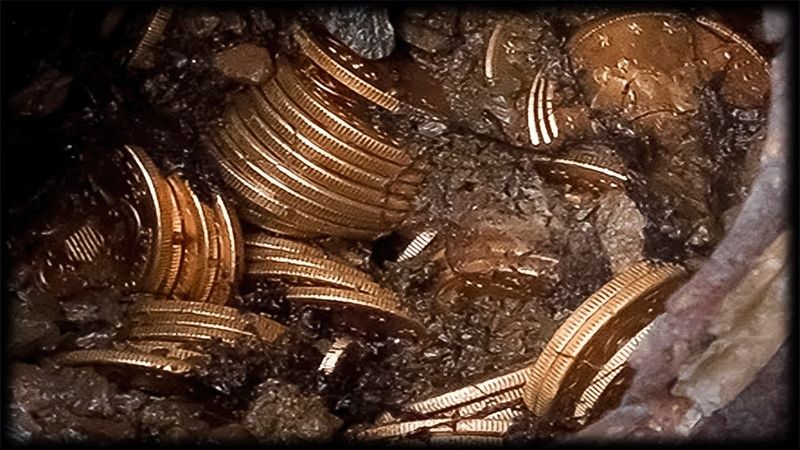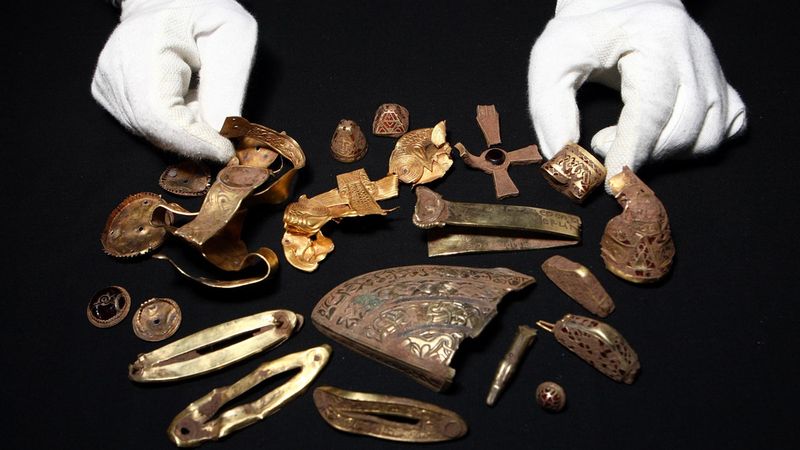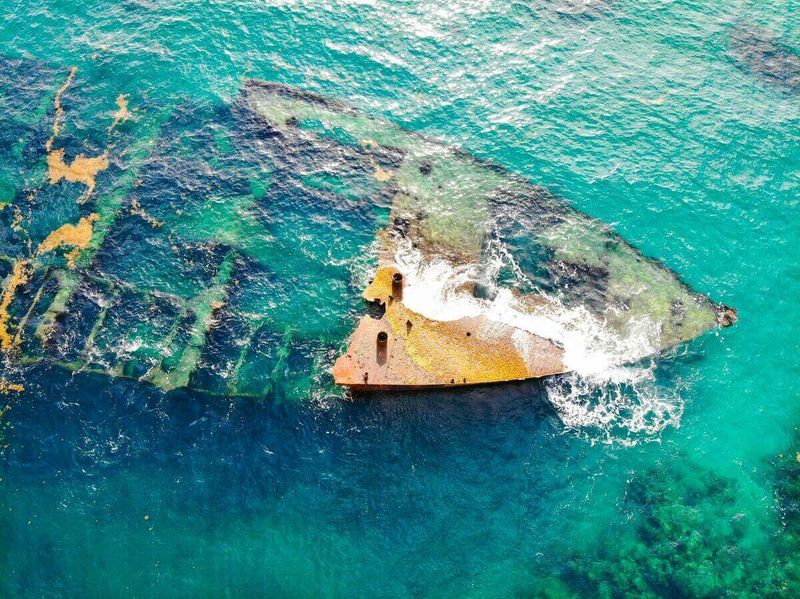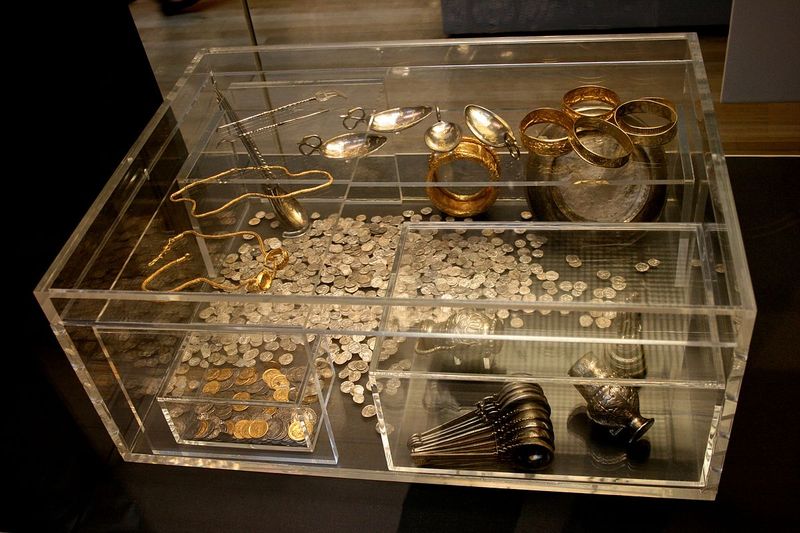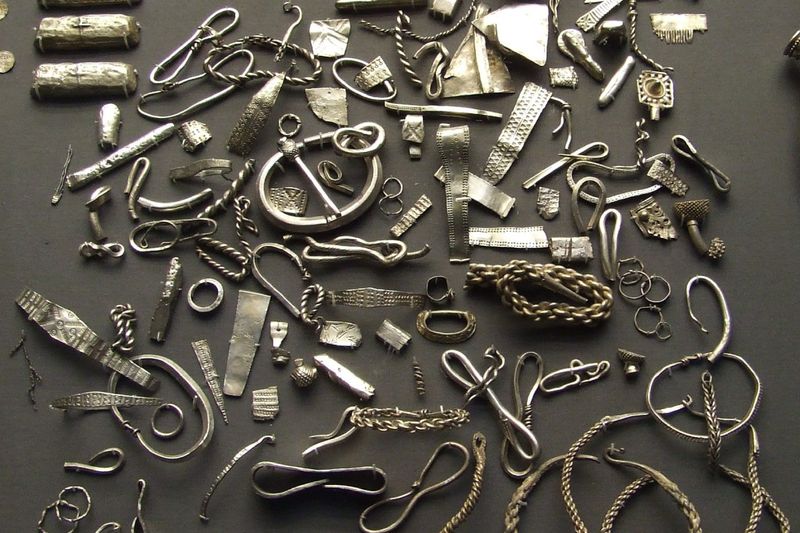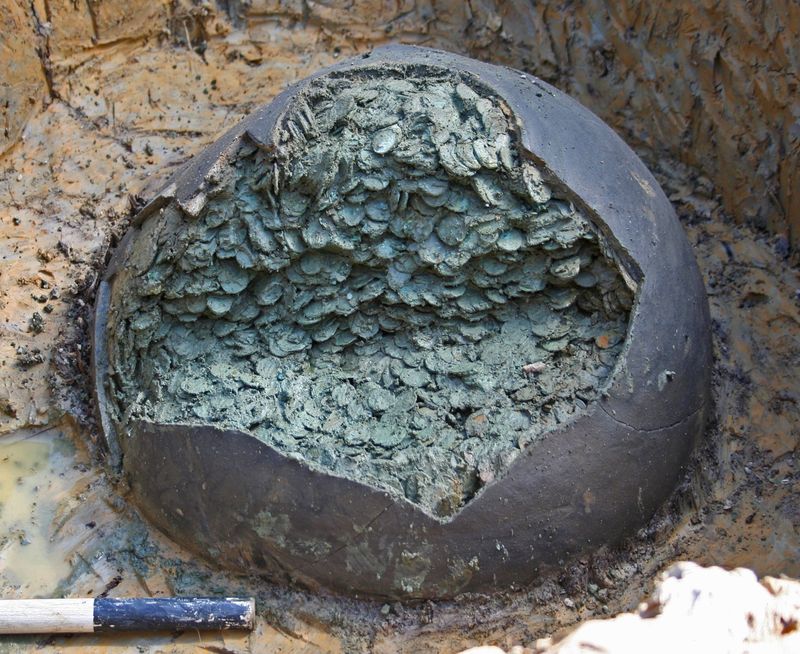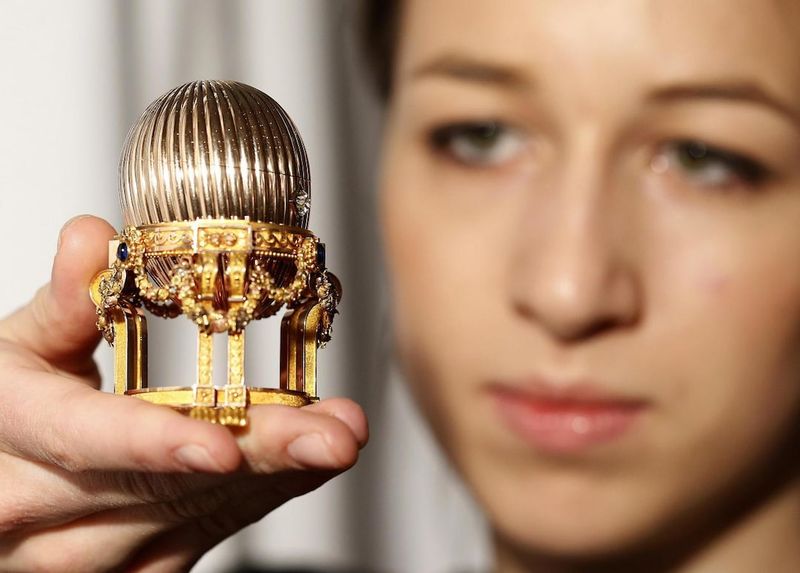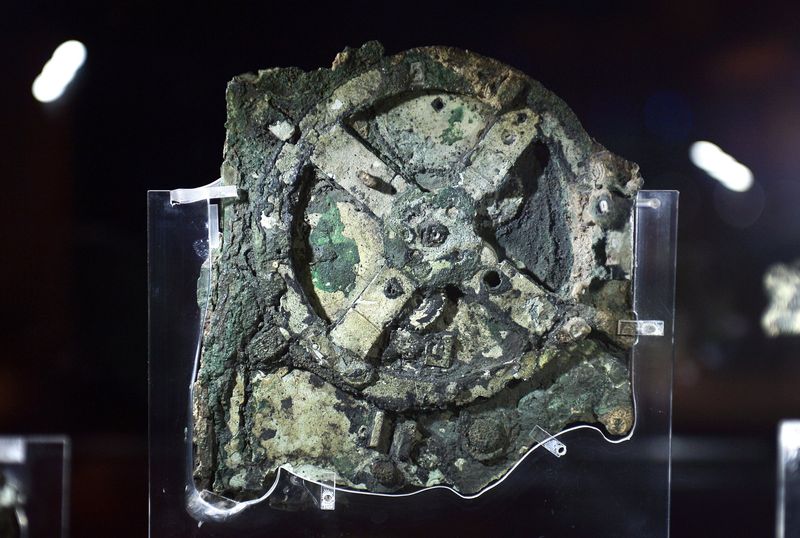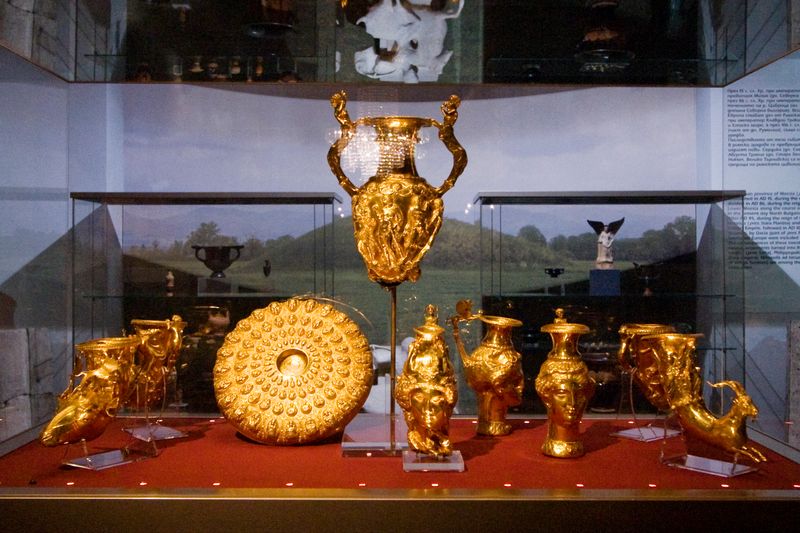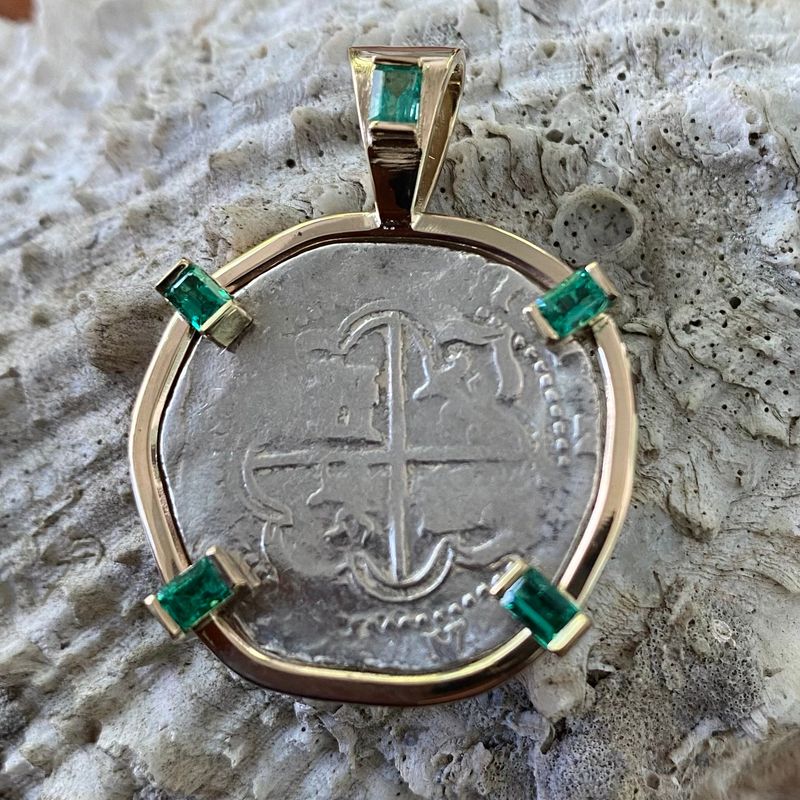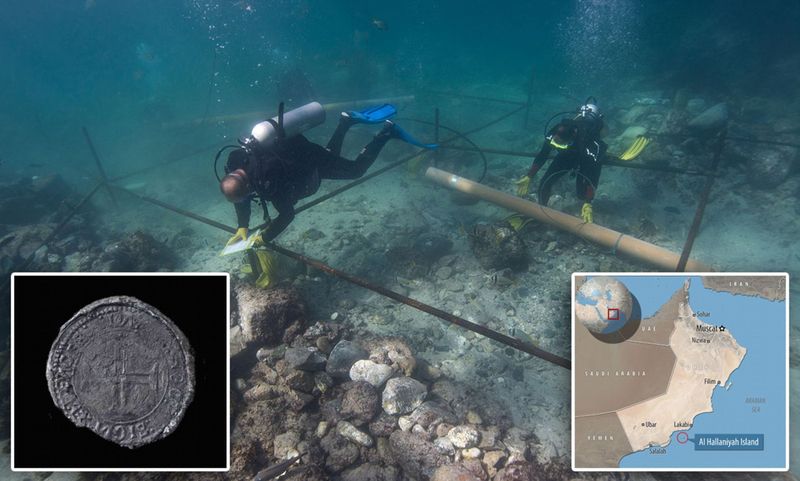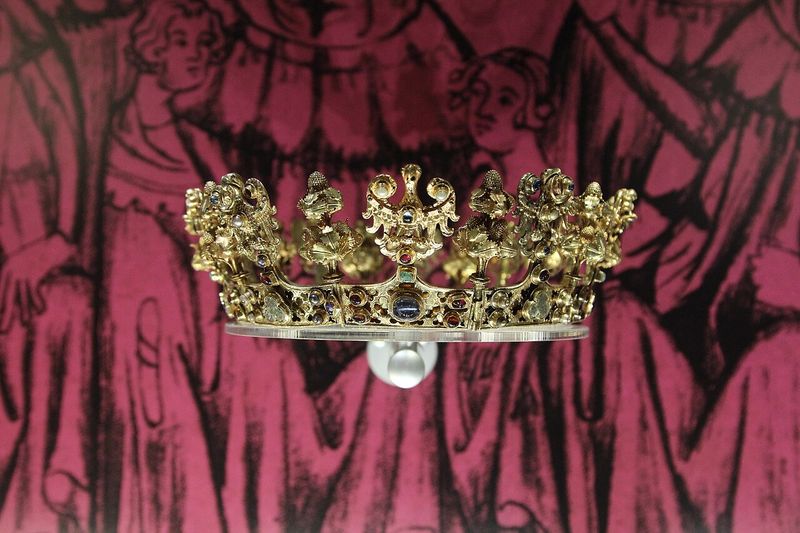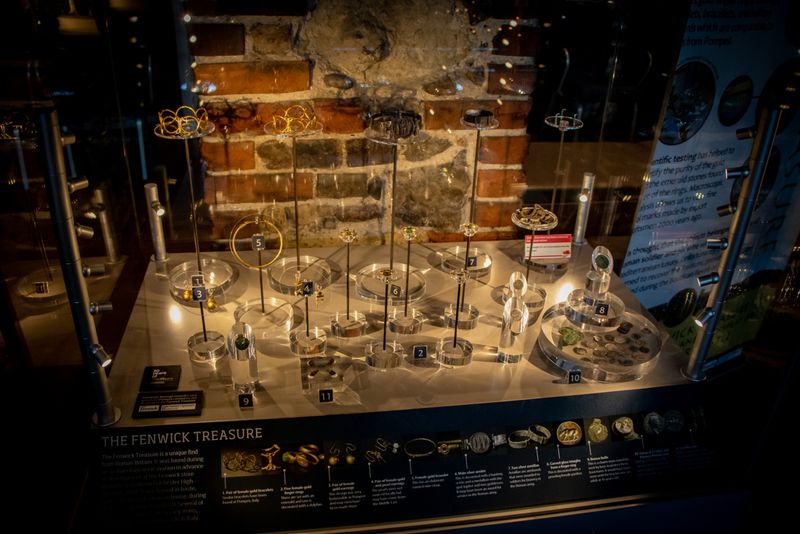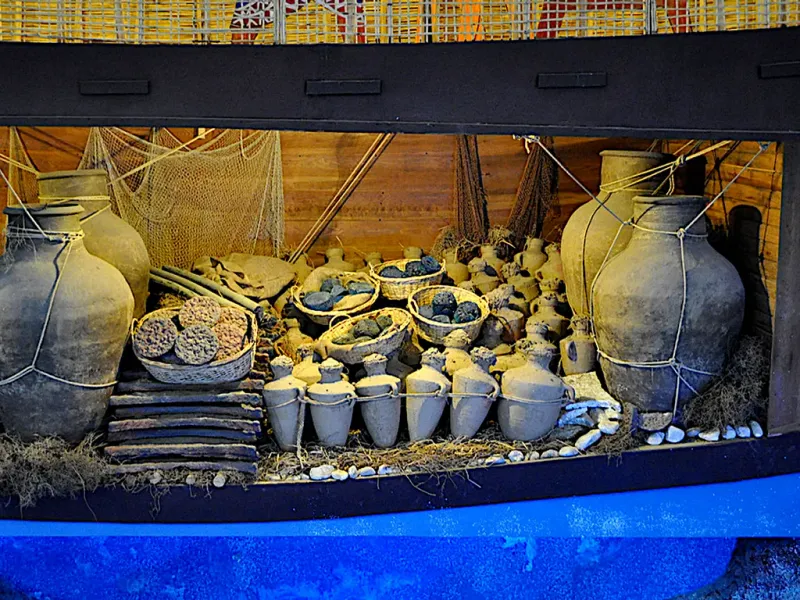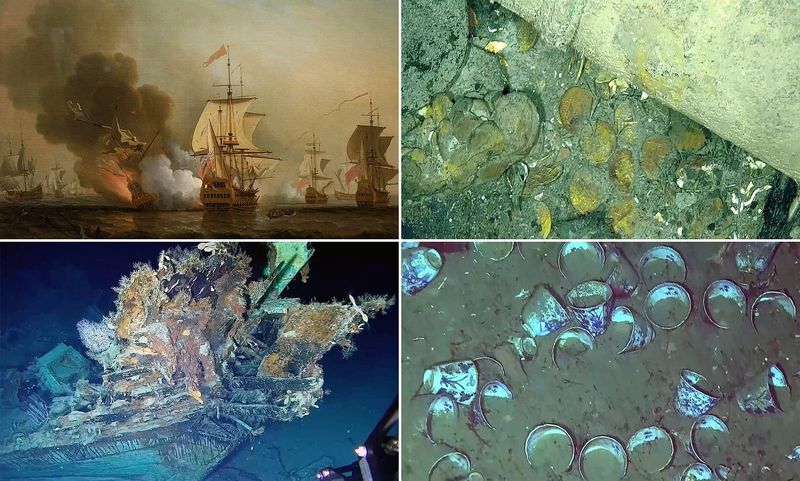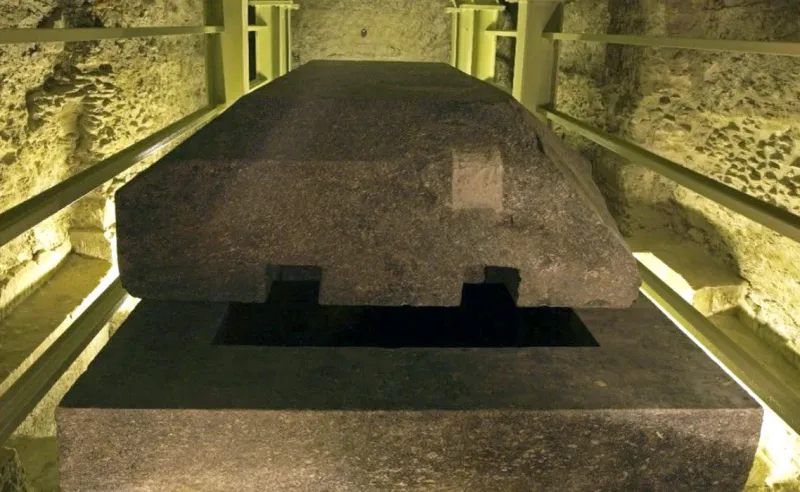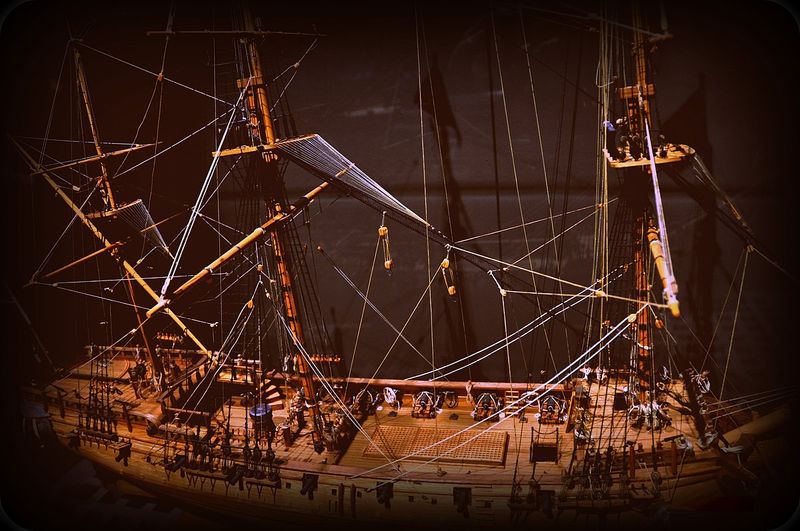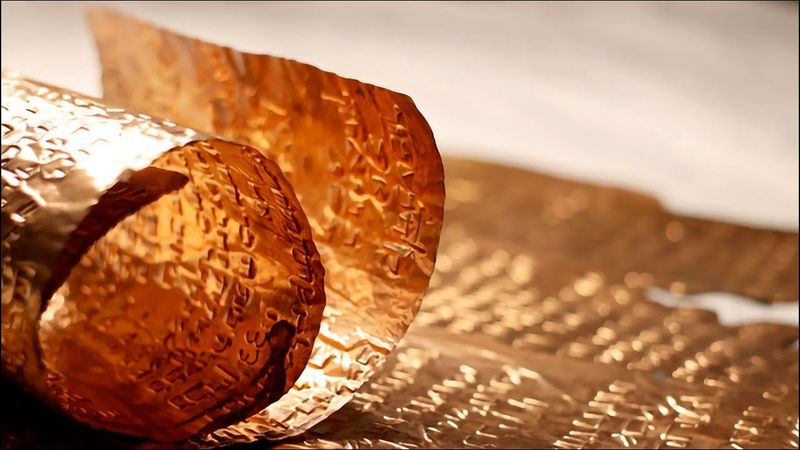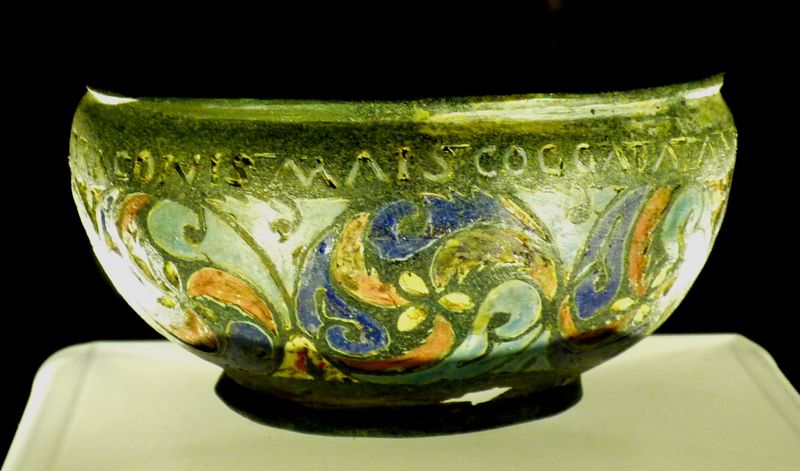The allure of treasure hunting has captivated adventurers for centuries, leading to astonishing discoveries that spark the imagination. From legendary gold caches to forgotten relics, the world is filled with incredible finds.
This blog post explores 21 real-life treasure discoveries that redefine the thrill of the hunt. Each item unveils a story of persistence, luck, and discovery, offering a glimpse into the adventurous world of treasure hunters.
1. The Saddle Ridge Hoard
In a stroke of extraordinary luck, a couple stumbled upon the Saddle Ridge Hoard while walking their dog in California. Hidden in rusted cans and buried beneath the earth, this cache contained over 1,400 gold coins dating from the mid to late 1800s.
Valued at over $10 million, it’s one of the most significant discoveries in U.S. history. The coins were remarkably preserved, some in mint condition, sparking immense interest among historians and collectors alike.
This find reignited interest in treasure hunting, proving that valuable relics might be lurking in the most unexpected places.
2. The Staffordshire Hoard
An amateur metal detectorist made history when he unearthed the Staffordshire Hoard in 2009 in England. This treasure consists of over 3,500 items, primarily gold and silver, from the Anglo-Saxon period.
The hoard includes weaponry fittings, religious artifacts, and other objects of immense historical significance. Experts believe it was buried during the 7th century, possibly as a result of a battle or in anticipation of one.
This discovery has provided invaluable insights into Anglo-Saxon craftsmanship and society, showcasing the wealth and artistry of the era.
3. The Black Swan Project
In the depths of the ocean, the Black Swan Project uncovered a staggering amount of silver and gold coins from a shipwreck. Discovered by Odyssey Marine Exploration, this find included over 17 tons of coins, believed to be from the Spanish ship Nuestra Señora de las Mercedes.
The treasure’s worth was estimated at around $500 million, making it one of the richest underwater finds in history. However, it sparked a legal battle over ownership, highlighting the complexities in treasure recovery.
This discovery underscores the potential and challenges of underwater treasure hunting.
4. The Hoxne Hoard
When a farmer misplaced his hammer, an astonishing discovery was made—the Hoxne Hoard, the largest collection of late Roman silver and gold found in Britain. Discovered in 1992 by a metal detectorist, it includes over 15,000 coins and numerous silver spoons, gold jewelry, and other items.
Dating back to the 4th century AD, it offers valuable insights into Roman life in Britain. The treasure is now housed in the British Museum, captivating visitors with its splendor.
This find exemplifies how accidental discoveries can lead to significant historical revelations.
5. The Cuerdale Hoard
Among the largest Viking silver hoards ever found, the Cuerdale Hoard was discovered in 1840 by workers repairing a riverbank in Lancashire, England. This remarkable find included over 8,600 items, consisting mainly of silver coins, ingots, and jewelry.
Dating to the early 10th century, it’s believed to have been buried by Vikings, possibly as a war chest or for safekeeping. The hoard provides valuable insights into Viking trade and economy.
Today, it remains a significant symbol of the Viking presence in Britain, demonstrating their extensive reach and influence.
6. The Frome Hoard
In 2010, a metal detectorist unearthed the Frome Hoard, a stash of over 52,000 Roman coins buried in a single clay pot. Found in Somerset, England, this discovery is one of the largest collections of Roman coins ever discovered in Britain.
Dating from the 3rd century AD, the coins reveal insights into Roman Britain and its economy. The hoard includes coins minted during the reign of several emperors, illustrating the complexities of that era.
This find emphasizes the potential of metal detecting in uncovering treasures of historical importance.
7. The Lost Fabergé Egg
The thrill of treasure hunting isn’t limited to ancient history, as proven by the discovery of a lost Fabergé Egg in a flea market. This particular egg, one of the 50 Imperial Eggs created for Russian royalty, was thought lost to history.
Found purely by chance, the egg’s intricate design and embedded jewels revealed its authenticity. It was later valued at over $30 million, becoming a modern-day treasure hunt legend.
This find highlights the value of persistence and keen observation, suggesting that treasures can be hidden in plain sight.
8. The Antikythera Mechanism
Discovered in 1901 off the coast of the Greek island Antikythera, the Antikythera Mechanism is often regarded as the world’s first analog computer. This ancient Greek device, made of bronze gears, was found among the remnants of a shipwreck.
Believed to date back to 100 BC, it was used to predict astronomical positions and eclipses. Its complexity astounds scientists, revealing the advanced understanding of technology in ancient Greece.
This discovery has reshaped our perception of ancient scientific knowledge, illustrating the ingenious inventions of past civilizations.
9. The Panagyurishte Treasure
In 1949, three brothers uncovered the Panagyurishte Treasure in Bulgaria, while digging clay for bricks. This stunning collection of Thracian gold consists of nine vessels, including rhytons and amphorae, dating from the 4th to 3rd centuries BC.
The craftsmanship is extraordinary, depicting mythological scenes and showcasing Thracian art’s opulence. The treasure’s discovery has provided insights into Thracian society and their interactions with neighboring cultures.
Today, it remains one of Bulgaria’s national treasures, mesmerizing those who gaze upon its brilliance and intricate details.
10. The Atocha Treasure
The Atocha Treasure, found off the coast of Florida, is one of the most famous shipwreck treasures ever discovered. Unearthed by Mel Fisher and his team in 1985, this Spanish galleon was laden with gold, silver, and precious gems.
The treasure was part of a fleet that sank during a hurricane in 1622. Valued at over $400 million, it represents a monumental achievement in treasure hunting.
The discovery required years of persistence and innovation, demonstrating the dedication needed to uncover these underwater marvels.
11. The Esmeralda Shipwreck
In 2014, the Esmeralda Shipwreck was discovered off Oman’s coast, revealing remnants of a 16th-century Portuguese ship from Vasco da Gama’s fleet. Unearthed by marine archaeologists, the site contained over 2,800 artifacts, including cannonballs, navigational instruments, and gold coins.
This discovery shed light on early European exploration and trade routes. The ship’s remains offered invaluable insights into maritime history, shipbuilding techniques, and life at sea during that era.
Such finds continue to enrich our understanding of global exploration and the individuals who dared to sail into the unknown.
12. The Sroda Treasure
During a construction project in Sroda Slaska, Poland, workers unearthed the Sroda Treasure, an astonishing collection of medieval gold coins, jewelry, and gems. Dating back to the 14th century, it is believed to have been part of the hoard of Charles IV, Holy Roman Emperor.
The treasure includes a golden crown and numerous pendants and brooches, showcasing the wealth and craftsmanship of the medieval period.
This find has captivated historians and archaeologists, providing a glimpse into the opulence and trade networks of medieval Europe.
13. The Fenwick Hoard
The Fenwick Hoard, unearthed in 2014 during excavations at a Scottish castle, includes an array of medieval weapons and armor. This discovery offers a fascinating glimpse into the warfare and lifestyle of the medieval period.
Consisting of swords, daggers, and pieces of chainmail, it reflects the military prowess and artisanship of the time. The hoard is believed to have been hidden during a period of conflict, possibly for safekeeping.
Such discoveries enrich our understanding of history, revealing the tools and strategies employed in medieval combat.
14. The Uluburun Shipwreck
The Uluburun Shipwreck, discovered off the coast of Turkey, is one of the oldest known shipwrecks, dating back to the late Bronze Age. Unearthed by sponge divers in 1982, it contained a wealth of artifacts, including copper and tin ingots, ivory, and precious stones.
This discovery has provided significant insights into Bronze Age trade routes and the interconnectedness of ancient civilizations.
The ship’s cargo, now preserved and studied, continues to inform historians about the complexities of early trade and the materials valued in ancient times.
15. The Koskovo Treasure
In the dense forests of Russia, adventurers discovered the Koskovo Treasure, hidden away for centuries. This remarkable find included a collection of 18th-century silver coins and religious icons, providing a window into Russia’s past.
The treasure is believed to have been buried during times of turmoil, possibly as a safeguard against invading forces. The intricate designs on the coins and icons reveal the artistry and religious devotion of the period.
This find has intrigued historians, offering a tangible connection to Russia’s rich and tumultuous history.
16. The San Jose Galleon
The San Jose Galleon, often dubbed the “Holy Grail of Shipwrecks,” was discovered off the coast of Colombia. This Spanish ship, sunk in 1708, was laden with gold, silver, and emeralds destined for the Spanish crown.
Valued at billions, it remains one of the most significant underwater discoveries. However, legal disputes over its ownership have complicated its recovery.
Despite these challenges, the San Jose Galleon continues to captivate treasure hunters and historians alike, symbolizing the wealth and risks of maritime exploration in the Age of Sail.
17. The Secret Chambers of Saqqara
Nestled in the heart of Egypt, the ancient burial grounds of Saqqara have recently revealed hidden chambers filled with treasures. These chambers, dating back over 2,500 years, boast an array of wooden sarcophagi adorned with vibrant hieroglyphs.
Archaeologists were astounded to find over a hundred of these ornately decorated coffins, each containing mummies preserved with meticulous care. The discovery sheds new light on burial practices in ancient Egypt.
The Saqqara find provides invaluable insights into the religious beliefs of the time, offering a glimpse into the afterlife aspirations of ancient Egyptians.
18. The Whydah Galley
The Whydah Galley, a pirate ship captained by the infamous “Black Sam” Bellamy, was discovered off Cape Cod’s coast. This shipwreck, unearthed in 1984, revealed a trove of treasure, including gold, silver, and artifacts from the early 18th century.
As the only confirmed pirate shipwreck in U.S. waters, it provides invaluable insights into pirate life and maritime history. The recovered artifacts, now displayed in museums, tell tales of adventure and rebellion on the high seas.
This discovery continues to fascinate, offering a tangible connection to legendary pirate lore.
19. The Copper Scroll
In 1952, the Copper Scroll, an unusual manuscript, was discovered in a cave near the Dead Sea. Unlike other Dead Sea Scrolls, this artifact is made of copper and provides a detailed list of hidden treasures.
The scroll’s inscriptions describe various locations where gold and silver were supposedly buried, sparking a modern-day treasure hunt. While most treasures remain undiscovered, the scroll offers a tantalizing glimpse into the wealth and secrecy of ancient societies.
This find has intrigued archaeologists and adventurers, blending historical mystery with the promise of untold riches.
20. The Staffordshire Moorlands Pan
Discovered by a metal detectorist in 2003, the Staffordshire Moorlands Pan is a Roman bronze artifact dating back to the 2nd century AD. The pan features intricate inscriptions, including the names of Roman forts along Hadrian’s Wall.
This discovery has provided valuable insights into Roman Britain and the connections between military sites. The pan’s craftsmanship and inscriptions reflect the cultural and historical context of the time.
As a rare and significant artifact, it has captivated historians, offering clues to the Roman presence and influence in ancient Britain.

